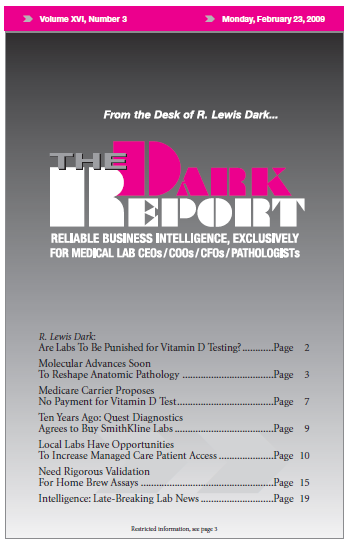CEO SUMMARY: Early this month, the second annual Molecular Summit assembled molecular first movers and early adopters to discuss their efforts to integrate molecular imaging and molecular diagnostics in patient care. One clear message emerged from two days of presentations and discussion: a host of new technologies is ready for clinical introduction and is likely …
Molecular Advances Soon To Reshape Anatomic Path Read More »
To access this post, you must purchase The Dark Report.


